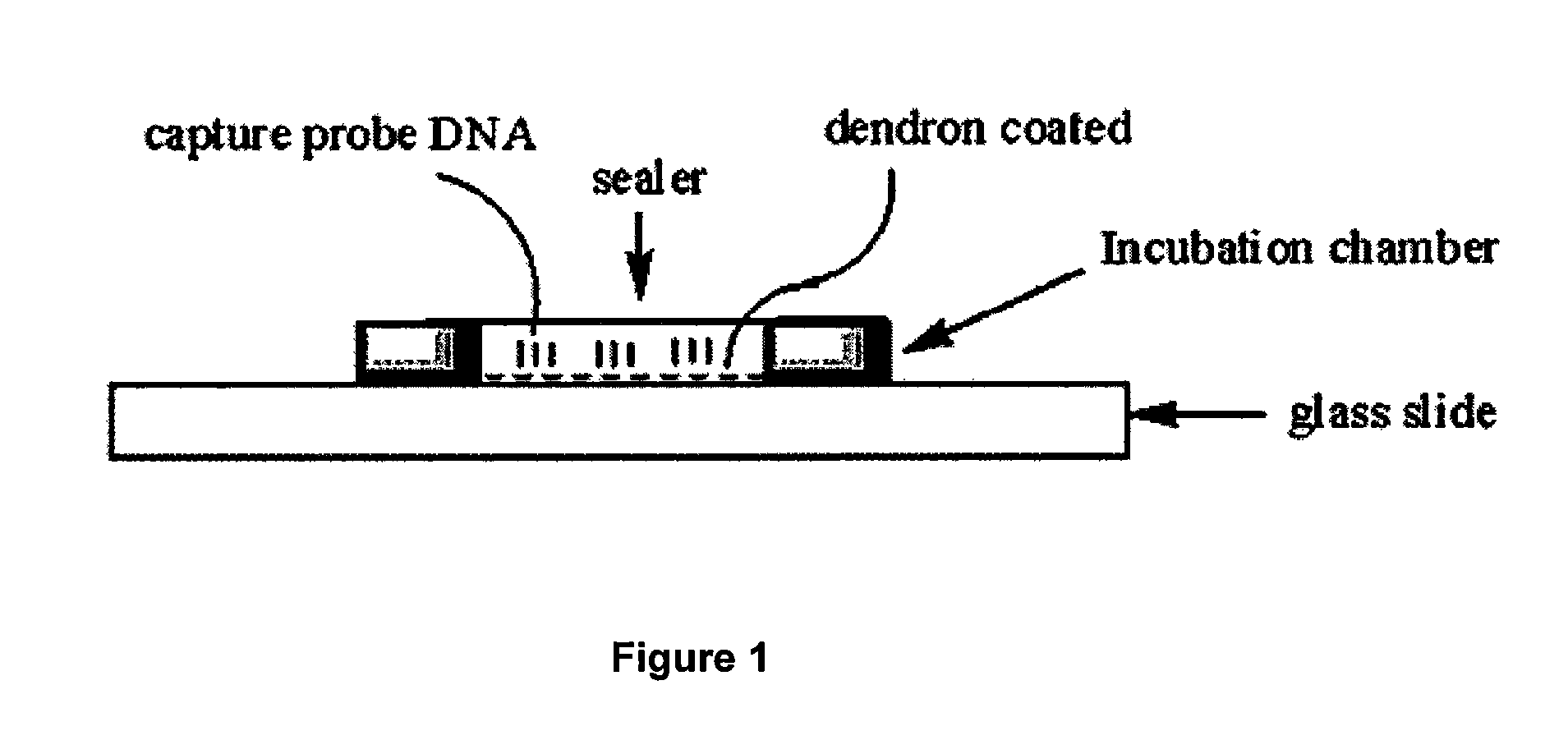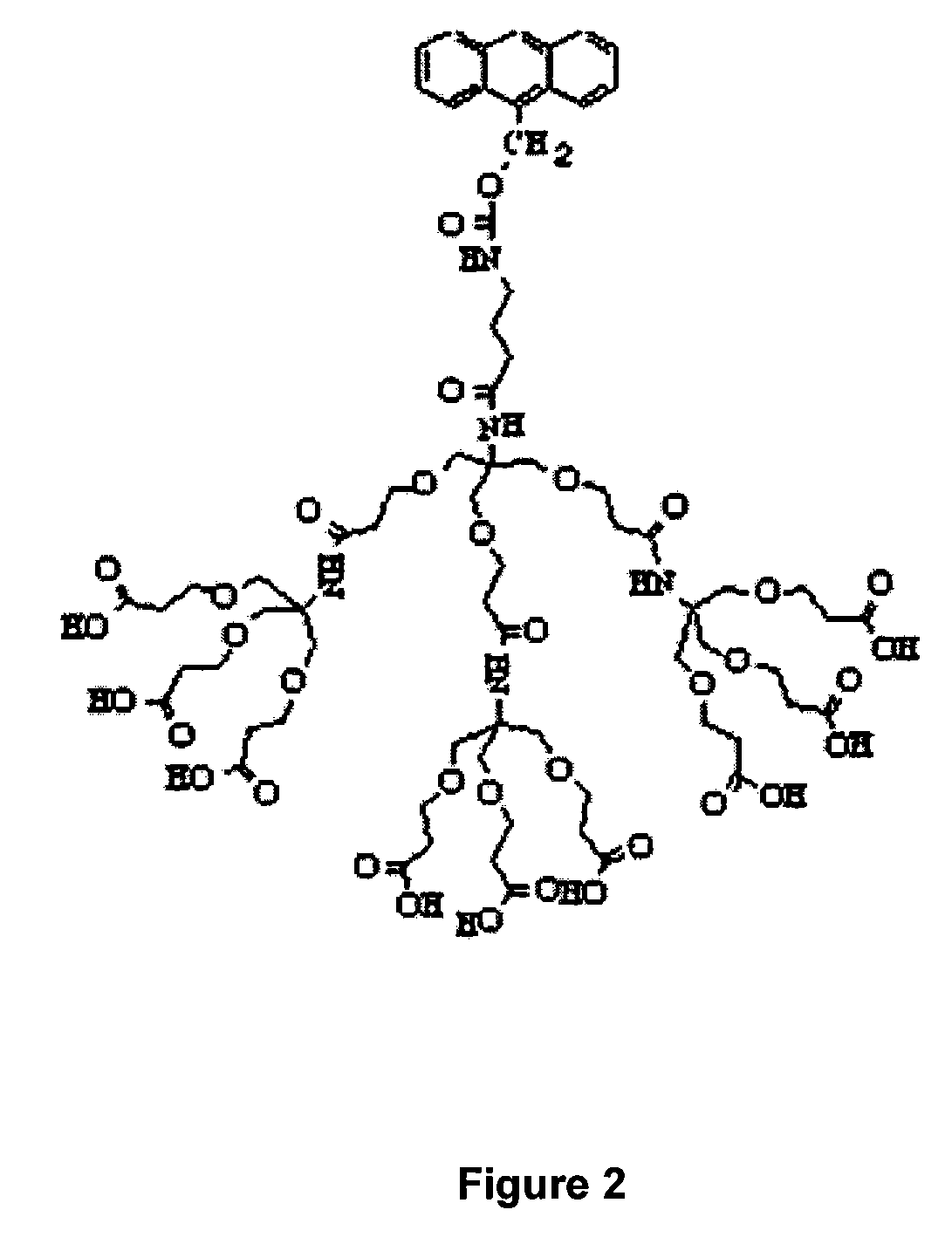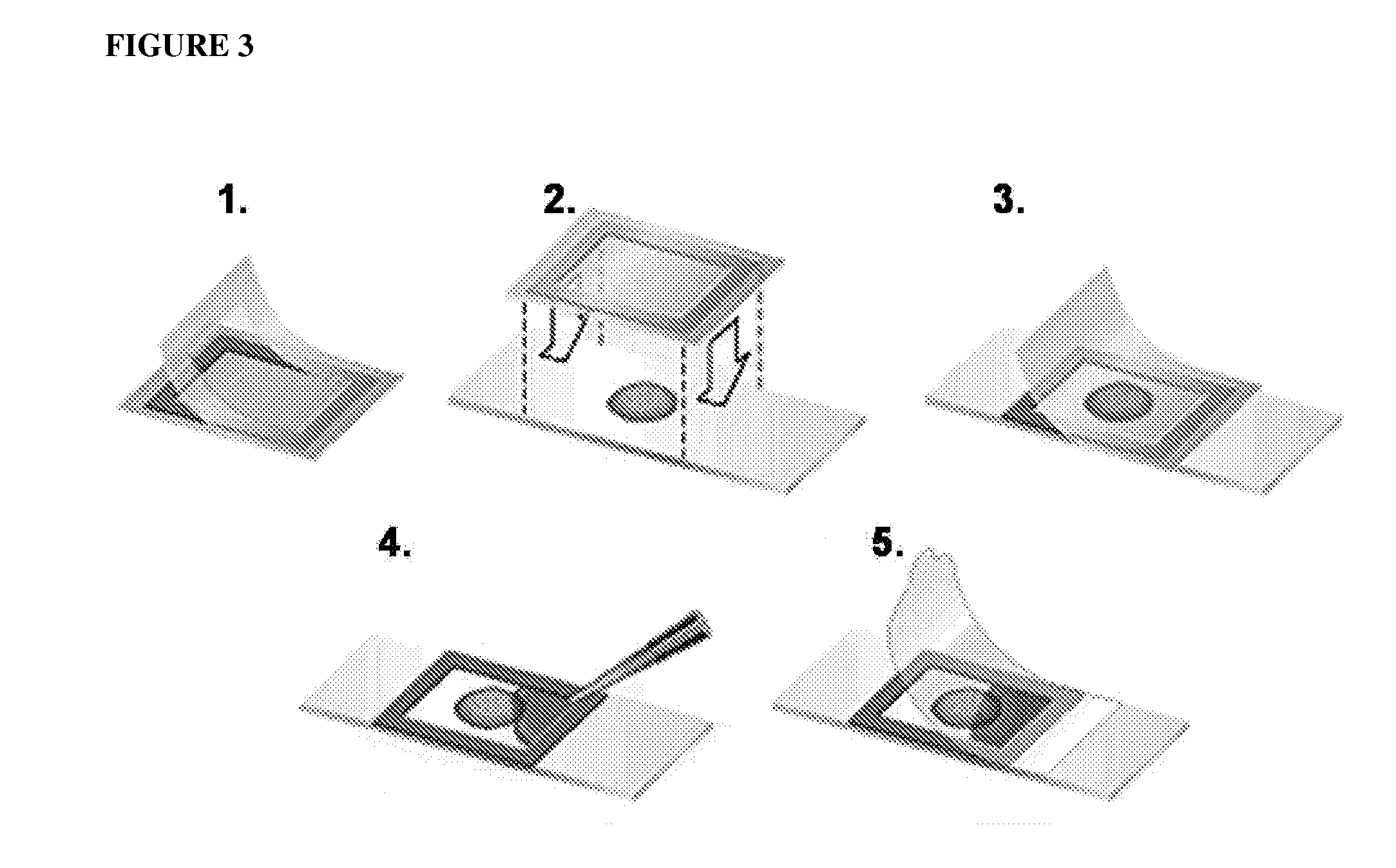One step diagnosis by dendron-mediated DNA chip
a dendron-mediated dna chip and chip technology, applied in the field of chips, can solve the problems of long process, large time requirement for gene amplification and purification, loss of samples, etc., and achieve the effect of facilitating detection, facilitating detection, and facilitating detection of amplified nucleic acids
- Summary
- Abstract
- Description
- Claims
- Application Information
AI Technical Summary
Benefits of technology
Problems solved by technology
Method used
Image
Examples
example 1
Preparing DNA Microarrays
[0131]3′ or 5′-Amine-tethered capture probe oligonucleotides were immobilized on a DSC-activated dendron-modified surface of the glass slide by spotting the solution in a buffer containing 25 mM sodium bicarbonate, 5 mM MgCl2 and 10% (v / v) dimethyl sulfoxide at pH 8.5 using a Q-Array mini microarrayer (Genetix). After spotting the probe oligonucleotides, the microarray was incubated in a chamber maintained at 85% humidity for overnight to give the amine tethered DNA sufficient reaction time. Slides were then stirred in a buffer solution containing 2×SSPE (0.30 M sodium chloride, 0.020 M sodium hydrogen phosphate and 2.0 mM EDTA), pH 7.4 and 7.0 mM SDS at 37° C. for 1 h to remove non-specifically bound oligonucleotides. Finally, the DNA-functionalized microarray was dried under a stream of nitrogen. See FIG. 3, which schematically illustrates the Hybrid Chamber (25 μL Frame-Seal chambers (MJ research)).
example 2
Blood-direct PCR and Hybridization on the Dendron Surface
[0132]5 μl of blood was microwaved for 3 minutes or heated at 99° C. for 10 min in 0.2 ml PCR tubes with tightly fitting caps. The sample was centrifuged at >1500 rpm for seconds, and 0.5-1 μl of supernatant was added to PCR reaction mixture. In the case of genomic DNA, it was extracted from HEK 293 cell using GENE ALL™ Blood SV mini kit and added to PCR reaction mixture. The solutions were transferred onto the dendron surface to which capture probe oligonucleotides (DNA sequence 5′-TCGACATAGTNTGGTGGTGCC-NH2-3′ where N is G(wt), A, T, or C (mt), SEQ ID NO: 1) were immobilized. PCR and hybridization reactions were consecutively performed using a Px2 thermal in situ slide cycler (Thermo).
[0133]For gene amplification directly from blood samples, 5 μl of blood was heated in a microwave oven for 3 minutes or heated at 99° C. for 10 min in a 0.2 ml plastic conical tube with tightly fitting caps. The sample was centrifuged at >1500 r...
example 3
Serum Based PCR and Hybridization Using Fluorescence Labeled Primers
[0137]Capture Probes
[0138]The probes were designed to determine the nucleotide sequences at position 1896 (G versus A) in the HBV (Hepatitis B virus) genome. The capture probes for detection of codon 1896-wild type (5′-GGT TTG GGG CAT GGA CAT T-NH2-3′, SEQ ID NO:4) and 1896-mutant type (5′-GGT TTA GGG CAT GGA CAT T-NH2-3′, SEQ ID NO:5) from the HBV genome were attached on the dendron surface.
[0139]Serum Based PCR and Hybridization Consecutively on the Dendron Slide on which Capture Probes were Immobilized
[0140]About 10-20 μl of HBV-infected serum was heated at 99° C. for 10 min on a heating block. The heated sample was then centrifuged, and 2.5 μl of the clear supernatant was added to a PCR solution which contained 10 pmol of fluorescently labeled (Cy3) forward primer (5′-Cy3-TTAAGGACTGGGAGGAGCTG-3′, SEQ ID NO:6) and fluorescently labeled (Cy5) reverse primer (5′-Cy3-GCTCCAAATTCTTTATAAGGGTCA-3′, SEQ ID NO:7), 0.25 m...
PUM
| Property | Measurement | Unit |
|---|---|---|
| temperatures | aaaaa | aaaaa |
| temperatures | aaaaa | aaaaa |
| temperatures | aaaaa | aaaaa |
Abstract
Description
Claims
Application Information
 Login to view more
Login to view more - R&D Engineer
- R&D Manager
- IP Professional
- Industry Leading Data Capabilities
- Powerful AI technology
- Patent DNA Extraction
Browse by: Latest US Patents, China's latest patents, Technical Efficacy Thesaurus, Application Domain, Technology Topic.
© 2024 PatSnap. All rights reserved.Legal|Privacy policy|Modern Slavery Act Transparency Statement|Sitemap



